GREEN & SILVER






Artist rendering of the new Student Academic Services Building. Slated for completion spring 2026.








Artist rendering of the new Student Academic Services Building. Slated for completion spring 2026.

Dear Greyhounds,
Change is rarely easy. For many of us, the circumstances we face and lessons we learn mold and reshape us into something new. Through hard work and perseverance, we forge our paths to renewal, conquering every challenge along the way.
The continued work on our publications marks a moment of celebration for our team. In the past year, we have transformed in more ways than one. Our Greyhounds called, and we listened. What began as a collection of feedback from alumni in our Greyhound Family has evolved into a reimagined magazine and new alumni engagement platform, The Silver Pack. Out of all the feedback collected, one pattern emerged. You want to be connected, engaged, and have a clear window into what is happening at your beloved alma mater.
We went back to the drawing board and asked ourselves to answer difficult questions. How do we reconnect our Greyhound family with ENMU in a meaningful way? How do we balance tradition, innovation, and diverse audiences?
The solution: reimagine how we define storytelling. In just three issues, we have transformed the style of our magazine, focusing on strong imagery and authenticity. Naturally, this guided the direction of our digital content on the Silver Pack, where we are trying unique approaches to community connection on the web. We can only grow from here.
In true ENMU style, we embraced the Greyhound approach of challenging norms and going against the grain. In a world of short-form content, we are working to create stories that are rich, genuine, and, hopefully, resonate with our audience. We bring stories to life by innovating with new formats across video and the web. Wherever opportunity exists, we chase it.
This issue embraces change and adaptation through the lens of “Rebirth and Renewal” in the lives of our Greyhounds. We hope you enjoy this vibrant set of stories showcasing how your fellow Greyhounds have reimagined their lives and careers as they seek their own rebirth and renewal.
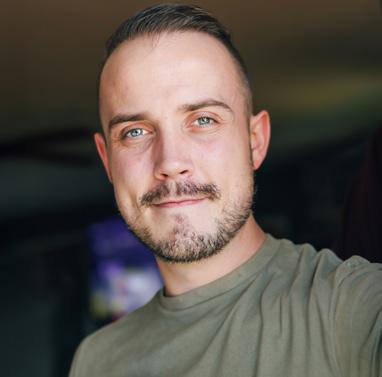
Shaun Banther Director of University Communications
As we turn to another page in our storytelling journey, our team continues to grow. Sara Wright, a ten-year designer for ENMU and a recipient of the Spirit of Eastern award in 2025, has taken over the role of Digital Design Editor for our publications, and Tymber Wolf, a recent MFA creative non-fiction graduate from the University of Idaho, has joined our Greyhound family as Chief Editor and Writer for Advancement and Public Relations. Sara has played an instrumental role in the evolution of the ENMU brand throughout her career. As an alumna of the College of Fine Arts, Sara progressed from student to staff digital artist, guiding the modernization of our design and transforming the look and feel of our brand. Tymber is brand new to New Mexico, right out of her MFA program, where she focused in nonfiction writing and creative storytelling. She has been brought onto our team and into our Greyhound community to help shape the new voice of Green and Silver; Tymber has said that her calling is “telling people’s stories.” We celebrate Sara and Tymber’s personal renewal as they bring their expertise into the next wave of our publications.
Lastly, in the spirit of this season’s theme we have one more announcement for our audience. Starting with this issue, we will transition the Green & Silver to a campuswide publication, bringing in more stories about students, research, and regional impact. Readers can anticipate two issues published annually. With this change, you will have a broader variety of stories, a longer magazine, and a greater connection with the University and community that you love most.
We hope you find prosperity in your own journeys. No matter how many times we are reborn and renewed, Green & Silver will reign forever. To all our beloved Greyhounds and friends, be bold!
Go Hounds!
We Want to Hear from You!
Submit your story ideas and feedback to us at portales.silverpack@enmu.edu.

Tymber Wolf Chief Editor and Writer

Sara Wright Digital Design Editor


In 1982, while working as the Texas State Media Representative for The Salvation Army in downtown Dallas, I received a call from my future boss, Winston Cox. He asked me to come to Portales to interview as the Director of Media Relations for Eastern New Mexico University.
I spotted the job ad in the Dallas Morning News. Since two of my brothers were university professors, and my position at The Salvation Army required attending chapel each day, a career change to higher education was appealing.
These were times well before GPS. After reaching Muleshoe, heading down Kakawate Road and dodging tumbleweeds, I began to wonder if the job was a scam. After spotting a football stadium in the middle of nowhere surrounded by pastures with cows grazing, I was convinced. Finally reaching the outskirts of Portales, I learned from an old sign that the population was comprised of several thousand people and “Three or Four Old Grouches.”

Tumbleweeds in my grill, skies caked in dust, grain silos, and peanut aroma clogging my sinuses, I almost made a U-turn and headed back to the big city.
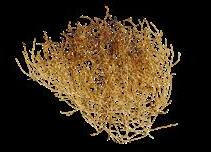




Tumbleweeds in my grill, skies caked in dust, grain silos, and peanut aroma clogging my sinuses, I almost made a U-turn and headed back to the big city. Then I remembered those daily required chapel services and decided to go through with the interview. After spending a restless night at the old Portales Inn, Winston met me for breakfast at 7 a.m. to begin eight hours of grilling.
Far from being a long-distance runner at that point in my life, I took part in an unexpected marathon. I met with several legendary ENMU employees and supporters who have since passed. These included: Athletic Director B.B. Lees, KENW Director Duane Ryan, Athletic Trainer Bill Joy, local dentist and Regent Buck Wilson, KENW’s Don Criss, ENMU President Warren Armstrong and Vice President of Business Affairs Eugene Bergman. Many others still living, including then-current students and off-campus media members, were also involved in the interview endurance race.
I can’t remember when I met the late Patti Dobson, but we soon became good friends playing outfield for a Presbyterian church softball team. When a high flyball came her way, she’d simply yell “Wendel!” for me to make a 40-foot trip to catch it.
We also had similar jobs when she was the promotion coordinator for Fine Arts before becoming a journalism professor. After her Fine Arts position was abolished, it was added to my Director of Media Relations responsibilities.
When I accepted the position and began Sept. 1, 1982, I was informed of an additional

Sports Information Director (SID) responsibility that would take 25 percent of my time — a real trick, since it would be added to a 40-hour a week obligation.
It turned out to take the vast majority of my time. I did both jobs for 12 seasons, usually working 60-70 hours weekly, before ENMU hired a full-time SID.
Over the years, I also taught a few journalism courses. One year, I served as a chaperone and bus driver, taking ENMU students to a press competition at Northern Arizona University. After our evening activities, I became “Wendel” instead of “Mr. Sloan.” This new moniker, of course, made me more like a person, which reminds me of my best theater performance. Before retiring, I acted as a corpse in a Puccini opera in a theatre production. Having to stay perfectly still in bed on stage, critics described my performance as “very lifelike.”


Despite the long hours, I have fond memories of those 12 years in both roles — including the time we employees and media had to get out and push an ENMU van up several snowy hills on our way to a football game in Colorado. Although I have bachelor’s and master’s degrees from East Texas State University (now East Texas A&M University), I always rooted for ENMU to beat them when we were both in the Lone Star Conference (LSC). I still watch the LSC post-season basketball tournament in Frisco, Texas, and think of snow.
Before cell phones, fax machines and computers, I spent many hours after games in the back of ENMU vehicles with a calculator and pencil, updating stats to call into the LSC office at 6 a.m. after getting home at 3 a.m.
I spent countless hours in ENMU’s darkroom in the attic of the Administration Building, developing film and printing photos of faculty, staff, students and sports teams.
Over the 36 years (1982-2018) I worked at ENMU, I had several secretaries (including Karen Smith Van Ruiten, Aida Lujan Romero and Betsy Chavez) and hundreds of students who worked for me as writers, photographers and general assistants. I put their photos on my office walls for years until I ran out of space. I am still Facebook friends with many of those students, some of whom became coworkers — including Noelle Bartl, Janice Friend Morrow and D’Lynn Ford.
I also interacted with hundreds of media members around the region — many of whom became friends. I would be remiss not to mention David Stevens of The Eastern New Mexico News, who also became my editor when he asked me to write a weekly column for the Amarillo Daily News and later The Eastern New Mexico News. Although I’m sure David did not always agree with my views, he never censored me. I imagine my bosses didn’t like me being so outspoken about my political opinions, but I never mentioned ENMU in the columns, and freedom of speech was still valued.
Before going viral became a buzzword, I remember two articles I wrote being carried by media around the nation and even internationally. One was about a pet duck following a professor around campus. Another was about a graduate who’d felt guilty about swiping toilet tissue from campus buildings as a student. Anonymously, he sent the Physical Plant a large box filled with rolls of toilet paper and a letter of apology.
My final boss at ENMU was John Houser. We not only became friends, recently sharing a meal in Dallas, but we played noon-time basketball, beating students in games for years with our good friends Doc Elder and Jody Bailey.


My other sports friends are too numerous to mention. I spent years playing tennis, intramural basketball, softball, golf, mud volleyball, pickleball, ping-pong and kickball with them. It turns out that several of these old friends were more than just intramural competitors but could, in fact, contribute to society. A retired Business Affairs employee and golfing buddy, Kenny Prince, still does my taxes and keeps me on the straight and narrow with the IRS.
For a few years, I organized intercampus faculty and staff basketball and softball games between ENMU-Portales and ENMU-Roswell. After one basketball game in Roswell being officiated by one student pulled from the stands, it got a little too physical and heated. Administrators “suggested” that we discontinue the series.
After ENMU-Roswell snuck in a 20-year-old former allstate basketball player, they beat us by one point. Moving forward, I ensured our basketball and softball teams included graduate assistants from our coaching staff. We never lost again.
My biggest contribution to ENMU — other than documenting “The Shoes of Graduation” and infusing a bit of humor into the Monday Memo which won first in the nation in a press competition for non-profit online newsletters — may have been when I served as president of the Professional Senate and became informally known as “The Party President” for the campus-wide parties I organized.

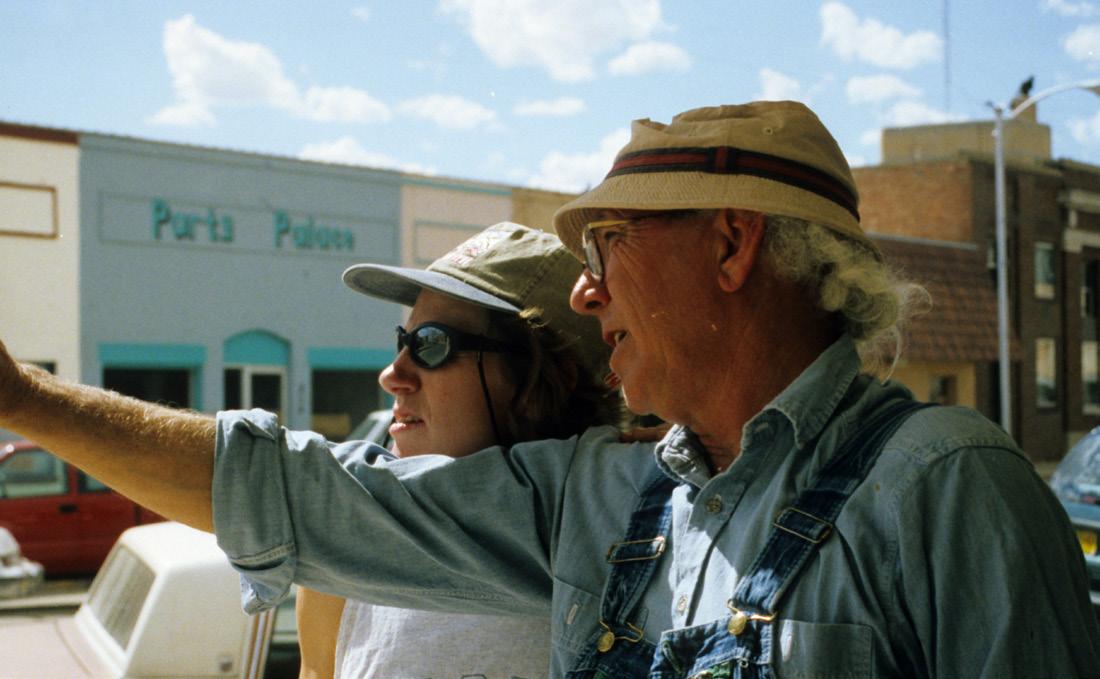
When I left ENMU, the only person who ever beat me in hula-hooping at these events was the nine-year-old daughter of Mike and Trish Maguire.
I also got to know several Clovis and Portales citizens through the “Sunday Funday” meetup social group I started. We only had one significant injury — occurring on a slick bowling lane. The good news is that before going down, the elderly man rolled a spare.
The one person on the search committee who voted against hiring me because he favored a former student who worked for him was the late, legendary Director of Housing and Student Life, Dallan Sanders (the CUB patio is named after him). He also did not seem to catch the humor when I joked that my resume was the best fiction I’d ever written.
That was Dallan — sharp, curious, unapologetic. The kind of guy who’d push your buttons just to start a conversation, not end one. Former Vice President for University Relations Winston Cox recalled that Dallan, “liked to push buttons, but always in a good way. It was never in spite — he liked to discuss things.” That was true. As Winston put it, “He was willing to discuss anything that he thought would be in the interest of the community. He always thought that everyone should broaden their horizons.”
ENMU Athletics alumna Jennifer Goble Poyer remembers him as someone who “talked about the elephant in the room” and made people feel seen. “He was always very encouraging ... even though I didn’t end up doing it,
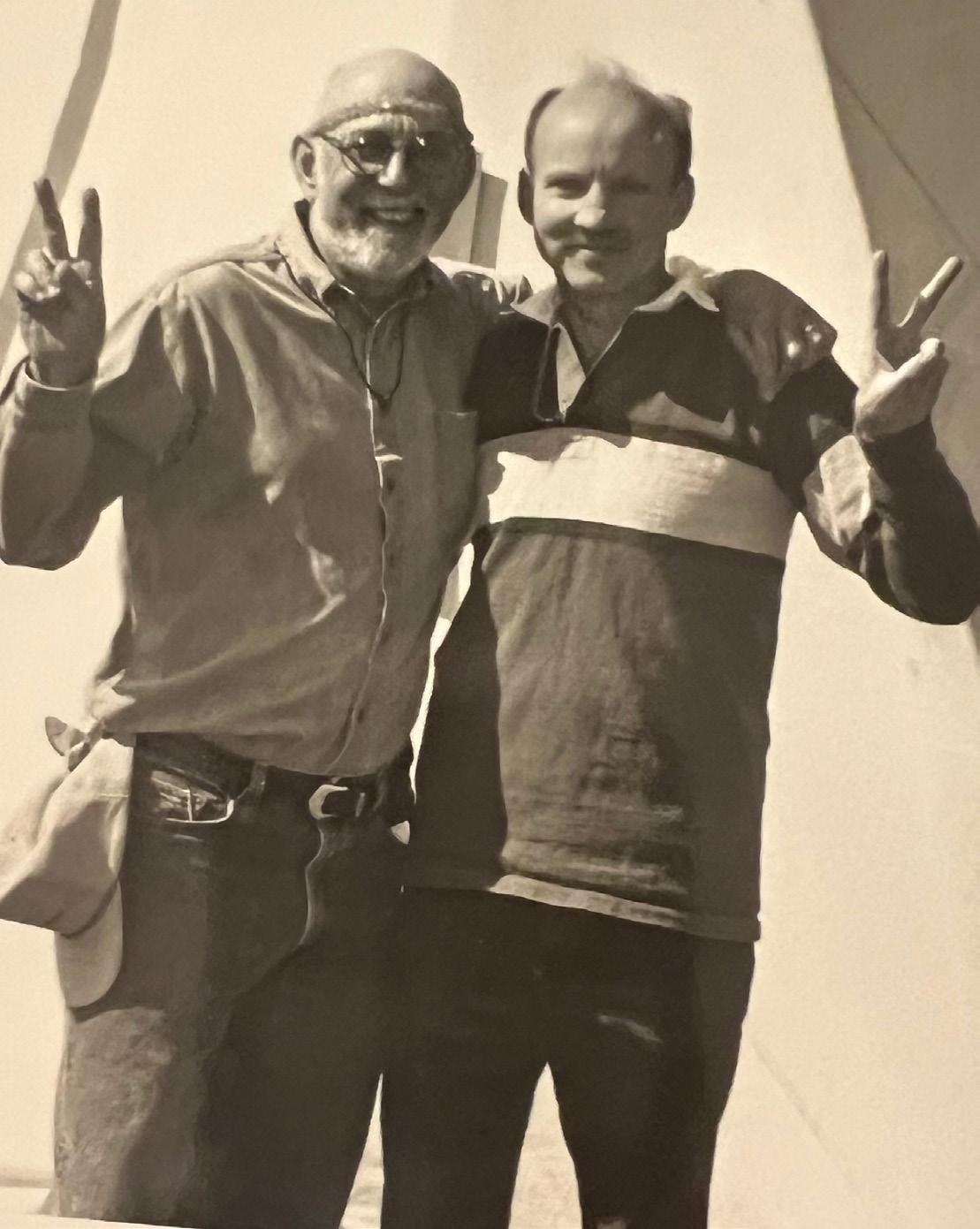
he made me believe I could be a sportscaster,” she said. He had that kind of presence.
“He used to drive this little convertible everywhere. He’d even drive it in the homecoming parade,” ENMU alumnus and former Women’s Volleyball Coach Inosia “Sia” Poyer recalls of Dallan’s signature style. “He had this long flowing hair, but no hair up here,” he chuckled, with a quick touch to the crown of his own head, also bald.


Dallan helped build the voice of ENMU.
“He’s Mr. ENMU to me,” Sia reminisces, “I think that’s the best way to put it.”
I couldn’t agree more.

Despite our rocky beginning, he became one of my best friends — as he was for most Portales.
Dallan, 60, passed away on Sept. 2, 1999, following what was supposed to be routine neck surgery in Albuquerque.
Spookily, due to a computer glitch, I received my final email from Dallan, titled “The Explanation of Life,” the day after he died.
He wrote, “The surgery is a proven procedure with infinitesimal risk. If I make it through, we will get together and talk about the ‘next dimension.’”
I’ll never get another of Dallan’s famous “Opsimath” business cards. I never knew if it meant “ability to learn late in life” or if he was just a bad speller.
Dallan, who often stopped by my house in his green Triumph convertible after tending to a blind man, Lyle Bert, down the street, had a premonition and told a Portales doctor he’d never return from Albuquerque.
I asked Mickey, his (now late) wife of 41 years, what he would have told me.









“Dallan wasn’t afraid of death,” she said. “He looked forward to it. He loved new experiences and thought death would be the ultimate experience. He called it the ‘next dimension.’”
Though I have doubts about an afterlife, in the case of my good friend who spent his life giving the thumbs-up to Portales residents from his green convertible, I will allow his belief to suppress my doubt.
His work here was done. It seems fitting that friends scattered his ashes in the many places he loved. One place just wouldn’t be big enough to hold such a spirit.
Whenever I feel the wind coming down and see the stars stretching up toward where life began, I know that Dallan is speeding through the Universe on the wings of the next dimension.
Someday, may we all earn the right to join him.
To our Opsimath, Godspeed!
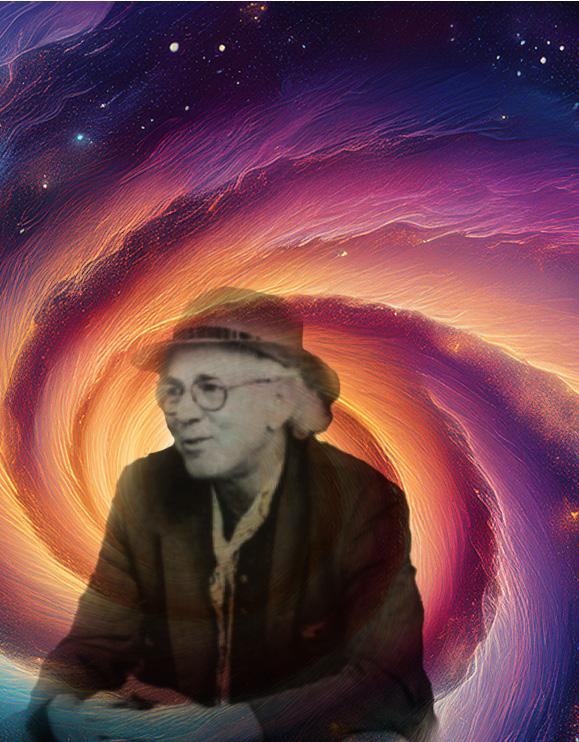















Editor’s Note: To further enrich Wendel Sloan’s reflection on Dallan Sanders, we have incorporated quotes and anecdotes from individuals who knew Dallan. These contributions from Winston Cox, Jennifer Goble Poyer, and Inosia “Sia” Poyer provide additional perspectives on Dallan’s character and impact, while maintaining the tone and perspective of Wendel’s original work.
Fueling his welcoming smile is a family history of creating community and a lifetime of building others up.

The vast future of Main Street merges effortlessly with his silhouette while he looks out on New Mexico’s land, breathy, humble, and full of surprises. Like generations before him, he stands without swaying to confront the unknown. One considers the contrast of strength and vulnerability: how one cannot exist without the other, and how they must exist to inspire each other.
Sandwiched between the Mix 107.5 radio station and High Plains Builders, behind modest wooden doors, a group of public servants put projects into motion, building community resources and infrastructure through grant funding and other fundraising initiatives. The front doors to the office of the Eastern Plains Council of Governments (EPCOG) blend into the backdrop of downtown Clovis, New Mexico, the community these public servants advocate for is also their neighborhood. For Vincent Soule (BS 15), deputy director of EPCOG, building up a community is not an uncharted pursuit, it is a map that has been running through his body for generations. Fueling his welcoming smile is a family history of creating community and a lifetime of building others up.
Soule initially set off for the University of New Mexico (UNM), Albuquerque in fall 2008, embarking on the path of a music student. He later switched his major to nursing when he was inspired to help people while learning more about biology and chemistry.
However, life presented an unexpected detour. His mother suffered a stroke during his freshman year that required him to return to Clovis to help keep his family and their business afloat. “Returning to Clovis, I kind of felt like I failed myself a little bit,” Vincent shared, reflecting on the vulnerability of his younger self. This return, born out of familial duty, became a period of recalibration, unknowingly planting seeds for a deeper purpose.


During this time back in Clovis, Soule continued his education. While attending Clovis Community College (CCC), he began tutoring elementary, middle, and high school students in mathematics and science through involvement in Engaging Latino Communities for Education (ENLACE) service. Working to support underserved communities in his neighborhood laid the foundation for many of his future pursuits. The immense satisfaction in empowering others awakened Vincent’s inherited passion.
After a few years of working, studying, and transferring universities yet again, Soule graduated with a degree in biology with a focus in pre-med and a minor in chemistry from ENMU in 2015. With his degree, he began a brief stint as an inventory and processing auditor for a manufacturing company tied to the oil industry. Vincent sought a more fulfilling direction, one that aligned with his passion for wellness and service.
In 2015, he joined EPCOG as a transportation planner, a role that appealed to his personal pursuit for community health. Being a transportation planner offered an opportunity for his work to make an impact. His role involved helping the local government with everything from transportation to infrastructure.
Vincent’s passion to help others and the growing needs of his own family presented him with a path where a lack of self-care consumed him. He was too busy, and he began to lose himself. “Maybe helping others was me trying to find a way to fix myself,” he mused.
The strain became undeniable, impacting relationships and friendships until he recognized a pattern. “Even though I helped people, I wasn’t helping myself very much,” he said, highlighting the importance of self-care that he neglected to give himself.
Vincent knew he couldn’t keep helping others if he didn’t help himself. Taking a courageous step toward self-renewal, he says, “I went ahead and swallowed my pride and reached out.”
He remembers the feeling of being ready for help. Seeking therapy and support was transformational for him, “I gained more self-respect and selfregulation, which greatly improved my quality of life.” Depression, once a heavy burden on his spirit, no longer struck him with the same intensity. This journey of self-recognition was a significant personal rebirth for Vincent, equipping him with profound empathy and a stronger sense of self.
His focus on self-care and personal health extends beyond himself. Vincent recognizes that many of the lessons he learned while pursuing mental health services for himself can be beneficial to others. “I feel passionate about helping those with mental health or physical disabilities,” he said.



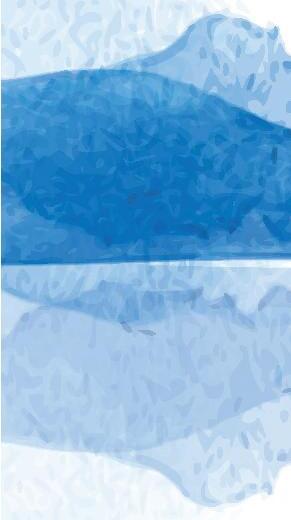



“They are an at-risk population, and they’re the people in our society who need the most help.”
Vincent’s openness to new experiences and his dedication to helping others guides his work in the present day. He is passionate about creating more mental health resources, particularly in rural areas, evidenced by his work to receive a Health Resources and Services Administration (HRSA) grant. With the HRSA grant, he works to guide middle- and high-school students into mental health careers, ensuring mental health resource accessibility in his neighborhood for the future.
Vincent Soule’s story is a rich history of ancestral grit, personal courage, and unwavering dedication to others. From the Mayflower’s landing on the shores of Cape Cod and the glacial lakes of Iceland to the plains of Eastern New Mexico, the spirit of rebirth and renewal has been a constant force driving his family and himself toward new horizons.
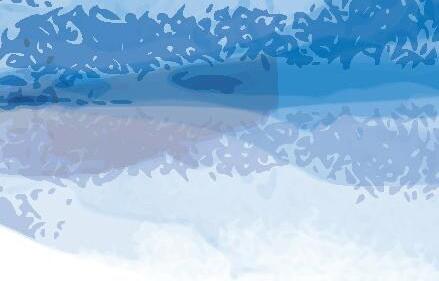








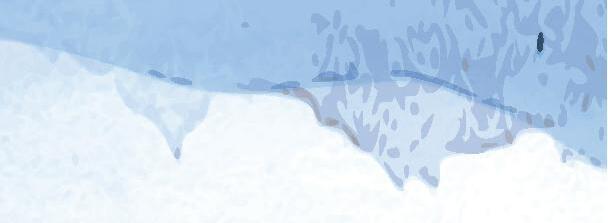

From the Mayflower’s landing on the shores of Cape Cod and the glacial lakes of Iceland to the plains of Eastern New Mexico, the spirit of rebirth and renewal has been a constant force driving his family and himself toward new horizons.
Scan to read the complete story of Soule’s “Legacy of Community” on the Silver Pack.










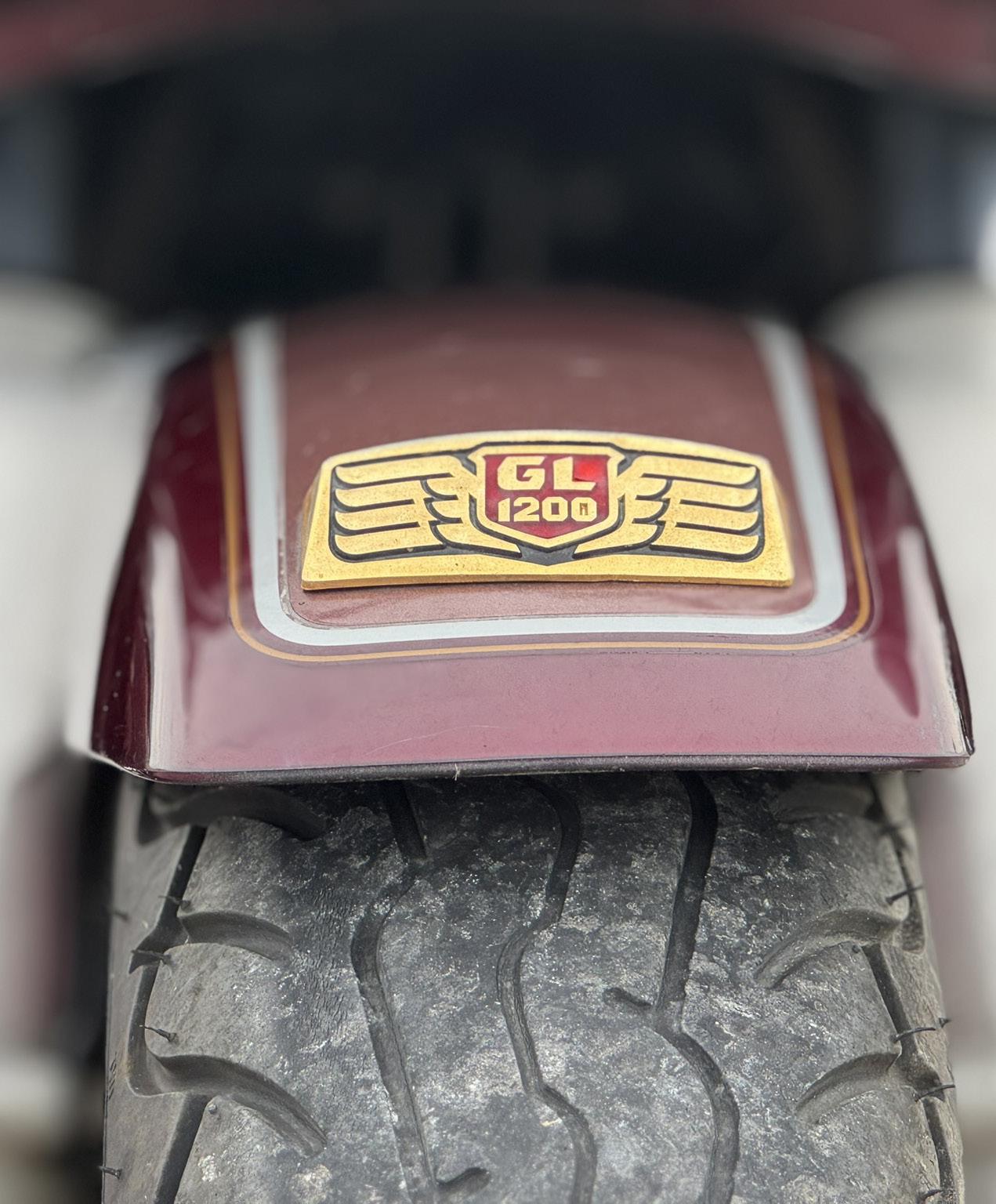

Some meditate or run, while others make crafts, but Johanson careens across the country in the sidecar of her motorcycle with her husband at breakneck speeds. She calls this ‘wind-therapy’.
The low rumble of the engine is deeply familiar. The shifting vibrations radiate through her spine, holding her bones and connective tissue in a resonant embrace. For Dr. Christy Johanson, Vice President of Student Affairs and Enrollment Management at Eastern New Mexico University, thousands of miles on her motorcycle mean more to her than a hobby. They are an essential part of what keeps her centered. Her way of being reborn and renewed. Some meditate or run, while others make crafts, but Johanson careens across the country in the sidecar of her motorcycle with her husband at breakneck speeds. She calls this ‘wind-therapy’.
The ground beside the road breathes in and out, contracting and releasing, as the Honda Gold Wing moves across the interstates. Cut stone passages pull sharp mountain terrain uncomfortably close, before throwing the bike into the vastness of the open fields in rural America. From her Hannigan sidecar, she doesn’t just witness, but feels the winding backroads, the rolling hillsides, and the open plains she rides through. She has always felt there was something significant, something uncanny, about the sound of an exposed engine: the way it is transformed by the environment, the way its pitch lowers into an
enfolding rumble, holding her close, almost like a hug. Or the way the road opens and the deep structured hum transforms into a chaotic scream that breaks up and dissipates, careening to fill the landscape.
As she rides, the hills encase her and let her go, while the bike’s pitch contracts and expands responding to the unique call of the land. The pattern of unfurling and receding in constant motion defines her out here.
She spreads her arms out wide and splits the wind with her fingers into invisible, self-contained eddies and revels at the wild beauty of the natural elements. They become a blanket made of a million tiny parts, each one moving, spinning, and vibrating in its own way. This is the tapestry from which she is woven, a pattern she is a part of and a place where she belongs.
The road has always been familiar, but it hasn’t always been a place where Dr. Johanson felt a sense of belonging. Growing up, Johanson adapted as best she could in the chaos of a turbulent home.

She found herself in the foster care system and attended nine elementary schools, four junior highs, and five high schools.
“I’ve been on the road my whole life, and I missed a lot of school, and almost didn’t graduate from high school because I kept missing so much.”
The path to belonging is never straightforward; renewal seldom comes without some form of rebirth. Somehow, against the odds Johanson made it to junior college. The first minutes on that campus bore into her deeply, leaving a lasting mark on her mind, developing her into who she is today.
“I remember going into the Wharton County Junior College (WCJC) administration building, and I didn’t know where to go,” she said, relaying a feeling shared by many ENMU firsttime college students. “I remember being scared. I didn’t even know what office to go to, because there wasn’t a welcome office or a central location in that building.” Once she made it inside the building, created a schedule, and started school, she began feeling at home. College was the first place where the rules seemed straightforward and simple. The chaos of her childhood and young adulthood started to feel more contained and lowered its roar. If she did the work, she could become her unique self, on terms that she could set, following the structure of the university. The wildness and broken pitch of her childhood began to enfold her like the engine of her motorcycle entering a high-hilled forest passage.
Back on the highway, while the sun is low behind dense woods that skirt the roadway, she watches the patterns of warm, pink light that illuminate the Honda Gold Wing’s mirror in flickering wedges. She smiles as she thinks of the pink light-up mirror she recently hung in her office back on campus.
College was the first place where the rules seemed straightforward and simple. The chaos of her childhood and young adulthood started to feel more contained and lowered its roar. If she did the work, she could become her unique self, on terms that she could set, following the structure of the university.



The mirror was a gift from a student.
Because of her past, Johanson sees fragments of herself in every student she meets. Like herself, this student faced challenges at other institutions. “She transferred here as a single mom. She had a really hard time in life and was already scarred and traumatized by other experiences in other schools,” she said, through moist eyes. “She was very untrusting and scared, but she also wanted to move forward.” Johanson spent time working and encouraging the student to help her achieve her goals and find a place of belonging.
As a gesture of gratitude, when that student graduated, she arrived at Johanson’s office with a gift in hand. Inside was a bright, heart-shaped mirror framed with a neon-pink light around its edges. The student wanted Johanson to look at her reflection in the mirror and be reminded that the person reflected back is amazing and worthy. “I hung it in the corner as a constant reminder of the impact that I had on her and the impact that she’s had on me,” Johanson said. Now, it is a constant testimony of Johanson’s mission, reflecting the faces of students, and her vision.





“It is so important to me that when students walk into this building, they will not see a wall, a sign, or another door to go through, they will see a person,” she says of the construction, “a person who says ‘Welcome, we are glad you are here.’”
Her vision is to help develop a space where every student, no matter where they come from, feels an immediate sense of belonging and support.
Pulling into Portales on a late August afternoon, the sun is low over the southwestern horizon. The exposed red beams of the new Student Academic Services (SAS) building rise from the ground into what looks like a steel nest. Like the low sun flickering in Dr. Johanson’s Gold Wing mirror, the patterns of light flick into long warm bars across the road like a welcoming pull into what is to come.
Johanson is a leading figure behind the design and the construction of the new (SAS) building, opening summer 2026. Envisioned as the new front door to campus, her concept is for each student to find an immediate sense of belonging. Johanson is considering every detail. The new SAS building will stand as a symbol of renewal for the student-centered services Johanson champions. The new SAS building fulfills her promise to include elements of belonging for any student who enters ENMU. This new building is a space that has been meticulously designed for function and feeling, a place not only for students to feel comforted, but also supported.
For Johanson, function and design must work harmoniously. The rules within the building are like the rules that helped her find herself. If the design makes it impossible for a student to know where they should go, then the entire function of the building is lost. She believes the openness of a space should encourage the student to explore with just enough structure to not be lost. “It is so important to me that when students walk into this building, they will not see a wall, a sign, or another door to go through, they will see a person,” she says of the construction, “a person who says ‘Welcome, we are glad you are here.’”


“We have a lot of first-generation, low-income individuals who have the ability to succeed,” Johanson says about students she has met who, by no fault of their own have yet to be exposed to the processes and procedures that organize a collegiate system. She explains that they just don’t know how to find themselves in the wide-open spaces, the twists and turns of the college experience. She works personally to offer them a place to learn more about who they are and to provide services that motivate them to reach for their aspirations. “They don’t know it yet, and they don’t know how to go about starting that process, that educational journey. For me, that was the hardest part. I think that support is what we offer here,” she said of her mission for the new building and department she is expanding.
It was in structure that Johanson found the edges of herself and truly understood where she ended, and the world began. The organization of a university, like a roadmap of the expanses of the country, offers just enough structure to protect and nurture individual identity, one’s unique path and intellectual potential, from the overwhelming nature of the unknown. If designed for the care and commitment of each individual student, it can also help guard them from, and guide them through, any echoing resonances from the chaotic, unmapped roads traveled prior. It is what saved Dr. Johanson, and it is how she intends to help Greyhounds. Education became her anchor. For a life constantly on the move, college became her first true roadmap.
“Truthfully, education was the first thing I found that had rules I understood. Nothing ever seemed to make sense,” she shares. “When I fell into education, I knew what the expectation was, and if I followed it, I would do well. It was the first time in my life that I got rewarded.”
In addition to her undergraduate studies at WCJC, Johanson has a bachelor’s degree from the University of Houston Downtown, two master’s degrees from the University of Houston-Victoria, and a Doctor of Education degree in Higher Education Administration from Texas Tech University. Each degree she has is proof of her perseverance in her personal life and trust in the rules of academia. “Education is where I belong. It is 100 percent ingrained into who I am,” she said.

It was in structure that Johanson found the edges of herself and truly understood where she ended, and the world began.
“I’m lucky enough to have a career that supports students and helps them find their place.”
When Johanson entered higher education, she was driven to succeed because she wanted the reward of learning. She knows this is the case for most students entering Eastern, but she is also intimately familiar with many of the challenges that often result in student stop-outs or failure. She notes that the intense feeling of impostor syndrome, the feeling of not being enough or skilled enough for something, prevents many students from moving forward. To help the students that come through her office, she tells them, “Education is one of the few things in life that is solely yours.” Johanson believes that the best thing we can offer students is the structure and support they need to be themselves, “No one can ever take your education from you. No one gives it to you. This is yours.” But no student is alike. Like the exposed engine of a Honda Gold Wing, that responds to its environment, whose sound bends and holds, opens and expands, we must bend and open to meet and support every student where they are.
Johanson isn’t only using her experience as a student for the rebuild of the SAS, she is also bringing in current students to imagine the ideal space where they would like to flourish. She brought students to test out furniture and talk about the layout that would be used for the new build. “We want them to feel welcome, because if you don’t feel welcome, you’re not going to feel like moving forward,” she said.
“The intent is to bring all of Student Affairs together in one space,” Johanson said, noting that some areas, such as Tutoring and Campus Life, will remain in the Golden Student Success Center and Campus Union.
“The new building will bring the bulk of the services in one space, in a more cohesive flow, a more welcoming vibe.” She imagines and hopes that the building will be the home base for her multi-division team and all the support that they may need when starting college.


The building will house a completely reimagined Career Services Department, born from the idea of providing Career Services for life. Moving beyond simple resume reviews, the new department will be a cornerstone of the University’s “Greyhound Connection” quality initiative, proactively building relationships with employers, securing internships, and serving alumni long after graduation. Support for our Greyhounds will not stop when they complete their education.
For Johanson, the elements of belonging are the secret to successful student services at the University. Johanson learned to trust the system and structure of academics because of her own struggles and personal tragedies. If it weren’t for higher education, Johanson may not have ever come to know her true self. After losing love, family, and almost herself, schooling was the nest that Johanson threw herself in. In that nest, she found who she was again. It was in higher education that she arrived, feeling lost, confused, and like she did not belong.
But no student is alike. Like the exposed engine of a Honda Gold Wing, that responds to its environment, whose sound bends and holds, opens and expands, we must bend and open meet and support every student where they are.

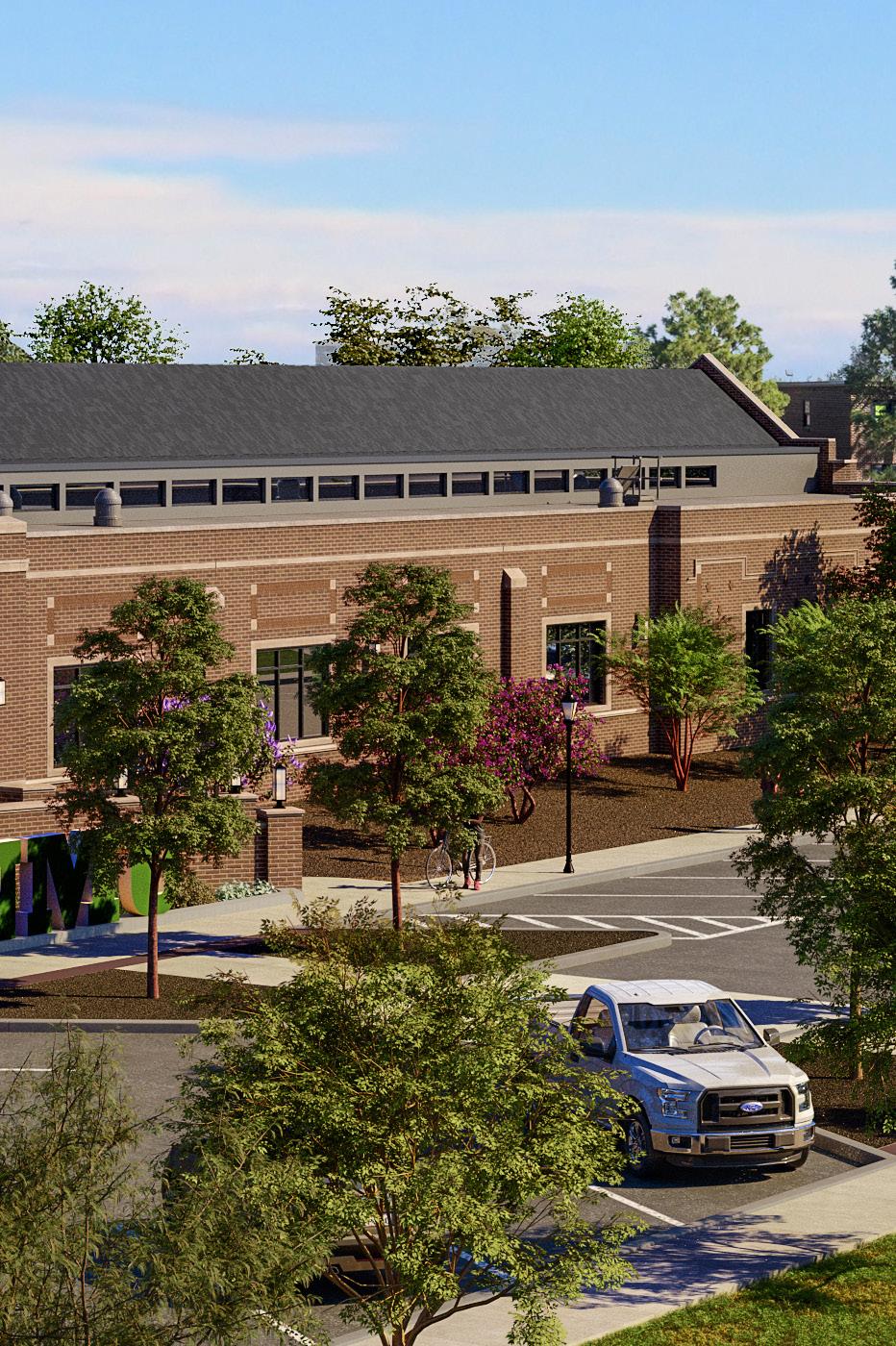
It was through education, support, and structure that she became whole again. She aims to ensure that every aspect of the newly constructed SAS building embodies a unique sense of nurturing. “I want visitors to feel a sense of comfort and ease,” she said. “I want them to feel like they belong here and not to feel overwhelmed, because those overwhelming feelings can stop someone from moving forward in their education.”
Moving forward at 79 miles an hour, they are passing a tractor-trailer. The sky is darkening, and the air is damp. She wonders if it might rain as she glances into the side mirror again. The semi recedes, and she is framed with the structured edge of the mirror. She is staring at who she is and, simultaneously, at all those she has been able to help. Chaos does not know itself without order; belonging has no hold until you are lost and then found. The highway turns south, and the clouds over the expanse of the plains look like a tower, a wall.


To be renewed, to grow to our fullest potential, requires us to face — and ride — the edge of the unknown.
She knows from her experience riding the margins out here, they are only moving vapor. She is on her favorite edge again. Captivated yet comfortable, calm but exhilarated: laid open to the road.
Johanson believes that the reason she can open herself to the chaos, the unknown, of the road is because she knows who she is at heart. Finding comfort riding the edge of that chaos is a skill many may never come to know, but she is committed to helping students find their edge, nonetheless, and supporting them as they face it. She knows that chaos is safe because she can always return to the building
and the structure that helped her know herself, as she works to create that structure for others.
To be renewed, to grow to our fullest potential, requires us to face — and ride — the edge of the unknown.
Riding in the sidecar of the Honda Gold Wing, her husband, David, driving, Johanson surrenders the control and the meticulous construction of her life to the elements of the open road. Arms out, face shield lifted, fingers wide, the wind embracing her from all sides as she fades into the land where she belongs.

ENMU alumnus Kevin Braggs (BBA '96) knows what it’s like to start over, again and again. From the football field to the oil fields, and from classrooms to boardrooms, his life has unfolded in chapters of reinvention. Each turn was a personal transformation.
Braggs has embraced every season of his life with purpose like a tree that thrives by shedding and renewing its leaves. Some chapters began with a sharp cut, while others grew slowly, layering to make the rings of a tree, each one marking a season of learning, change, or challenge. His journey wasn’t about one grand transformation, but a trust in the seasons of growth and renewal.
Whether taking a job mid-career beneath his qualifications to learn the oil industry from the ground up, or pivoting his business entirely after a market crash, he never shied away from uncomfortable beginnings. Reinvention became his signature, not just in what he did, but in how he approached the unknown. Each time he needed to, he began again with intention.
Kevin was raised in Houston by his single mother Myrtle Braggs, alongside his siblings, Anthony, Stephen, and Dora. They grew up surrounded by hard work and high expectations. His number one supporter, Myrtle, was an industrious woman who worked for Mrs. Stedman, a prominent entrepreneur who invested in mineral rights and was known for her philanthropy.


Though they had vastly different views on work, both women helped Kevin understand the difference between being rich and being wealthy. Their influence planted the early seeds of his ambition. Kevin recalled, “Mrs. Stedman always told me I could be my own boss and didn’t have to work for someone else. I started believing that at 17.”
Armed with the motivation shared by his early mentors, young Braggs’ goals began to take shape. A missed SAT test initially derailed his chance to play college football, despite being recruited by several Division I programs. It was a sharp disappointment, the kind that can snap a young person’s momentum like a late freeze nipping spring growth. But setbacks, like seasons, pass. Braggs had already developed deep roots, resilience, ambition, and a strong sense of purpose.
“At ENMU, I got to be Kevin,” he said. “It wasn’t just school. It was the beginning of everything.”
Not long after, at a high school basketball game, ENMU Head Football Coach Don Carthel (M.S. '75, B.S. '74) noticed Kevin in the bleachers and struck up a conversation that would change the trajectory of his life. “Coach Carthel was genuine,” he remembered. “Coach said, ‘I’ll be there for you.' And he was” Don and his wife, Cindy Carthel (M.S. '74, B.S. '74), became family to Kevin. “Cindy made us feel seen. She even helped me get emergency dental care one weekend.”
At ENMU, Braggs found room to grow into himself, away from the shadows of success cast by his older brother, Stephen, who was a star football player and a graduate of the University of Texas and a 10-year NFL veteran. “At ENMU, I got to be Kevin,” he said. “It wasn’t just school. It was the beginning of everything.”
Where the University provided space for Braggs to define his own journey, the support of his mentors nurtured him at the time he needed it most. Kevin’s growth extended far beyond football. “ENMU helped me find my gift,” he said. “Professors pushed me outside my comfort zone. Business communications got me into Toastmasters. Internal auditing made me love accounting. Business law. It just clicked.”
Like a tree learning to brace against unpredictable winds, Kevin sought out experiences that would fortify him for what challenges lay ahead. He interned with the Internal Revenue Service (IRS) in Clovis, where he learned to examine tax returns for fraud and studied why some businesses failed or succeeded. That handson experience, combined with his accounting degree, launched him into his first job at Southwestern Bell, a major regional telecommunications provider. He was assigned to the territory with the worst-performing construction engineering, and he turned the operation around in only nine months, saving the company $30 million. It wouldn’t be the last time he overhauled a struggling system. The experience propelled him into upper management, where he discovered a gift for leading and training others.
“I failed Advanced Accounting at ENMU,” he admitted. “I had to retake it. That lesson taught me more perseverance. That growth isn’t linear, it’s layered, like rings in a tree.”
But transformation for Kevin wasn’t just professional, it was personal, too. Mentors shaped him. From leaders like Felix Cook, a telecommunications executive and Kevin’s spiritual mentor, to James Aswell, a Houston entrepreneur who taught Kevin the value of land ownership and understanding the infrastructure of a community, Kevin was in guiding hands that helped him learn along the way. Even his greatuncle, Earnest McGowen Sr., was a Houston city council member and civil rights trailblazer. “My uncle taught me how service and leadership can go hand in hand,” Braggs said. “He showed me how to connect the right people to make real change.” Although his path was his own, the everpresent role of support guided Braggs forward.
Like the hidden root systems of a forest, Kevin began to understand how strength could be drawn from deep, often unseen connections. Each mentor formed part of the larger network, nourishing his growth, anchoring his values, and reminding him that thriving communities, like thriving people, are built on unity and trust.
That philosophy would come to define Kevin’s path. After corporate success, he followed the advice of a lifelong friend: “Buy some dirt,” he was told. So, he did. Kevin launched Braggs Brokerage Firm, first offering mortgage and real estate brokerage services in Texas and later expanding to four states with 57 employees. When the housing market collapsed in 2008, he didn’t panic. Kevin pivoted. He sold the mortgage services side, retooling and repositioning the business as a boutique brokerage firm. Still, his love of teaching tugged at him. He began lecturing at Houston Community College and the University of Houston, drawing on his corporate experience to train adult learners. When his fraternity brother recognized Braggs’ exceptional corporate training background, he encouraged Kevin to take those skills into oil and gas safety. Braggs said yes, but only after asking to work on an oil rig himself. “I needed to truly understand the risks and the work,” Braggs said. “So, I became a roustabout, then an assistant driller. I wanted to feel the pressure of the job, not just read about it.”
What began as a teaching gig became a new calling. Braggs ultimately achieved the training manager role for Wild Well Control.
But when oil prices plummeted in 2015, his steady climb suddenly hit a wall. Faced with uncertainty and industry upheaval, Kevin once again found himself at a crossroads. Instead of retreating, he seized the moment, channeling his expertise into writing the manual — literally. He launched Xcel Safety Training Solutions, developing industry-certified guides and expanding into corporate compliance, workforce development, and customized learning management systems for colleges, healthcare systems, and private companies.
Today, his company is rebranding as Training U, a natural evolution of the foundation he built. Like a forest extending its canopy, his mission now stretches across industries and borders, reflecting his own journey of steady growth and deepening impact. From oil and gas to community colleges to major hospitals, Braggs and his team cultivate learning that takes root and thrives.
Each reinvention has come with its own hurdles, lessons, and the support of numerous mentors. “I failed Advanced Accounting at ENMU,” he admitted. “I had to retake it. That lesson taught me more perseverance. That growth isn’t linear, it’s layered, like rings in a tree. ”
Now, Kevin pours back into others. He mentors entrepreneurs, high schoolers, doctoral students, and established the Braggs Family Endowed Scholarship to benefit undergraduate students majoring in business. “I tell them your teachers are there to make you uncomfortable. That’s how you grow.”
Through it all, Braggs’ journey was cultivated with intention. He sprouted from firm values, found determination in the shadows cast by unfavorable seasons, and drew strength from the protection and guidance of mentors whose branches stretched before him. He weathered uncertainty and deepened his roots with every challenge. Now, fully grown, he casts his own canopy, offering shelter, wisdom, and opportunity to those just beginning their own climb. And it all began at Eastern New Mexico University, the rich soil where his roots first took hold and his growth truly began.
“ENMU was where I discovered all of me,” Braggs said. “It wasn’t just school. It was the beginning of everything.”
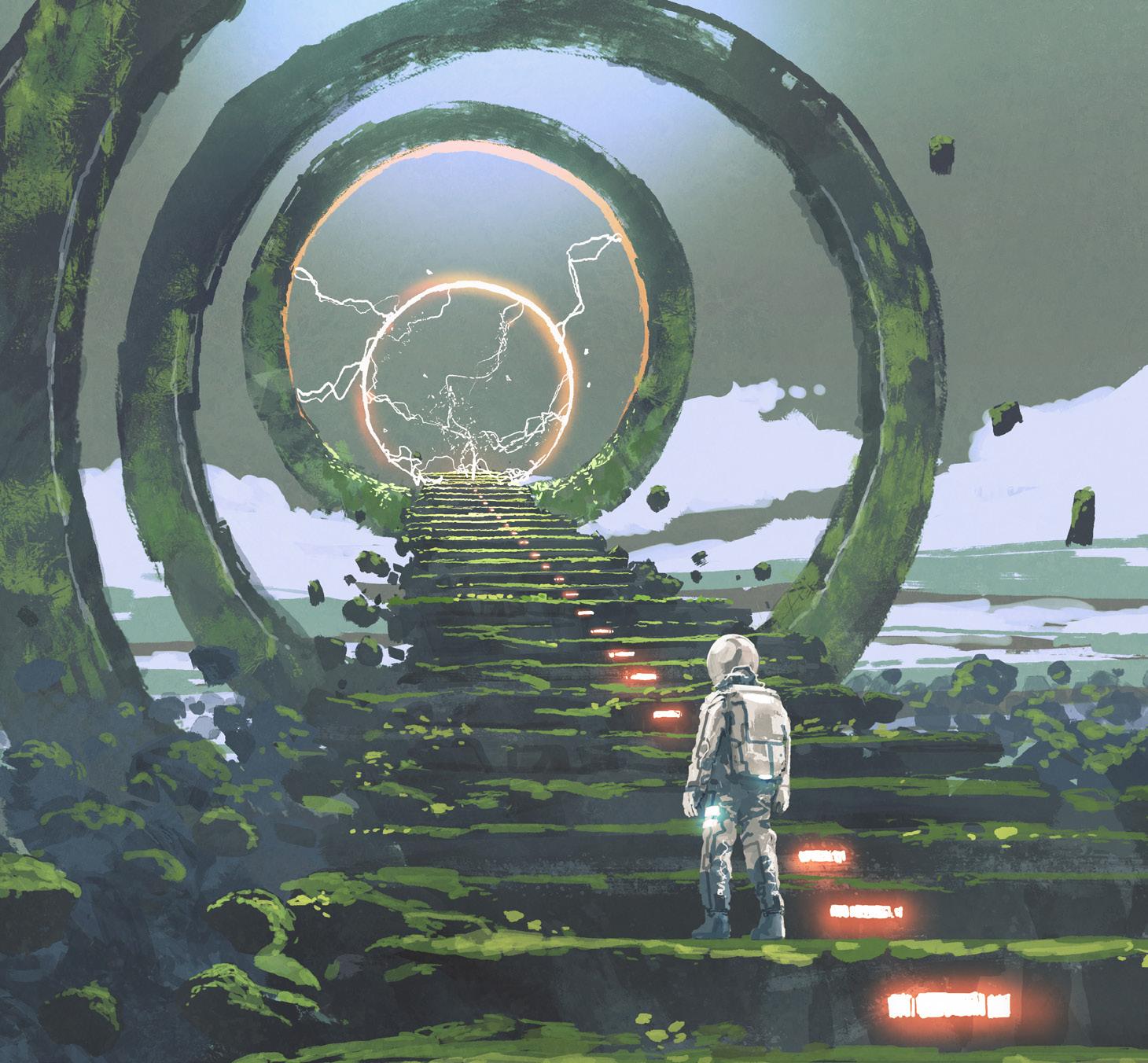


Although it has been a generation since his death in 2006 at the age of 98, the technologies he first imagined continue to become reality, including in a place that was near and dear to his heart for decades: the campus of Eastern New Mexico University.
Jack Williamson arrived in eastern New Mexico by way of covered wagon in 1915. In his lifetime he watched mankind walk on the moon, bore witness to a Venus fly-by in NASA’s Jet Propulsion Laboratory, and became one of the founders of science fiction. Although it has been a generation since his death in 2006 at the age of 98, the technologies he first imagined continue to become reality, including in a place that was near and dear to his heart for decades: the campus of Eastern New Mexico University.
When I arrived at ENMU as a freshman in 1979, it had been only two years since my uncle Jack had retired from his “day job,” 17 years of teaching in the English department.
That retirement came almost half a century after he had his first science fiction story published, and a year after he was honored as one of the Grand Masters of the genre. In recognition of his dual careers in academia and science fiction, a lectureship was established in his name at ENMU in 1977.
Thanks to all of that — plus the fact that Portales is a small world of its own — when I began attending classes, I was “Jack Williamson’s niece” to most of my professors.
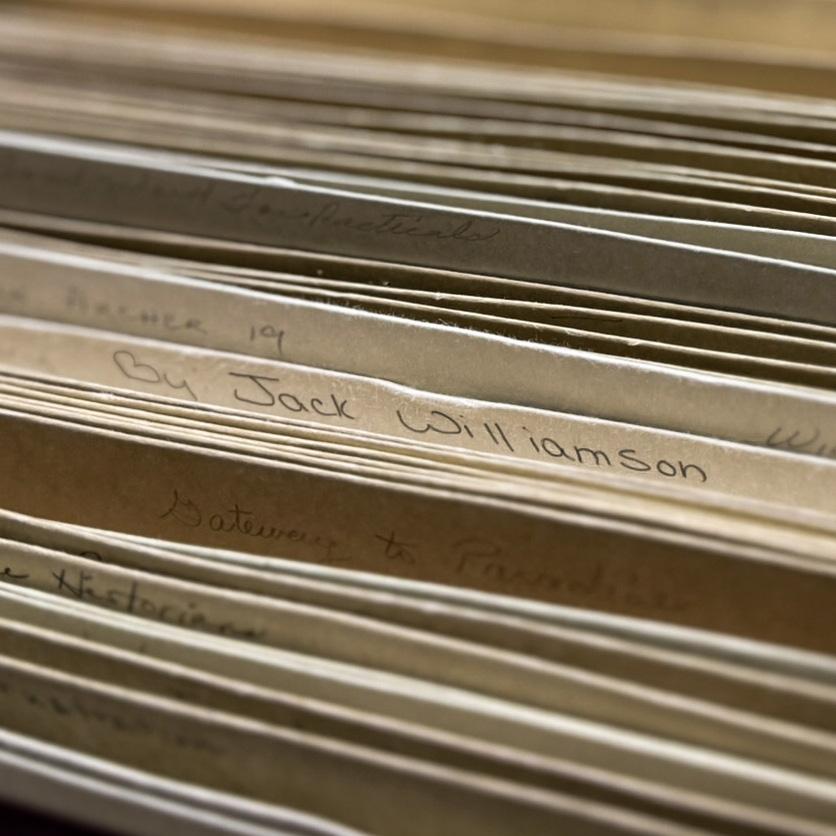

At the age of 17, I had yet to appreciate his career, but I’m certain that being “Jack Williamson’s niece” played no small part in landing me a freshman year job in that most arcane of spaces: the Special Collections room in ENMU’s Golden Library.
Time travel with me back to 1979 ...
Mary Jo Walker was the Special Collections director, and we worked out of a room that was tucked away on the north side of the first floor of the library, in a space that was only a fraction of the size it is today on the upper floor of the Golden Student Success Center.
The library used card catalogs comprised of row upon row of cabinets with tiny wooden drawers that were packed with cards that made it possible for you to search by title, author, and subject. Even in our wildest imaginations, we couldn’t have guessed that a few decades down the road most of us would be carrying smartphones that enable us to do that … and so much more.
The collection included the papers written by two of Jack’s longtime friends and fellow writers — husband and wife Edmond Hamilton and Leigh Brackett — along with shelves full of boxes brimming with crumbled science fiction “pulps,” the magazines that were the backbone of the genre through the mid-1950s. One semester, another student worker and I were assigned the tedious task of “cataloging” those boxes — a term I use loosely, as we were working with index cards and #2 pencils, making handwritten lists to tuck into envelopes pasted on the outside of each box.
During another part of the semester, I was assigned to operate a keypunch machine, which I never fully understood, but it was the latest technology for data storage. Other positions in the archives were more suited to me. As a local history buff, I relished a different task: listening to oral history interviews that had been recorded on cassette tapes and transcribing them on a typewriter. Even with his out-of-this-world imagination, I’m not sure Jack could have anticipated the scope of what Special Collections would become … or that many of its contents would one day be available in a fraction of a second to any location in the world. Jack came up with the word

“terraforming” in 1942 to describe the transformation of another planet to make it suitable for human use. In a sense, that is what Special Collections continues to do every day, transforming its materials to be accessible to all.
But, as pointed out by Lane Van Ham, the library technical assistant in Special Collections, “The perennial challenge in special collections is publicity.”
To put it bluntly, Special Collections, which now occupies generous quarters spanning much of the east side of the second floor of the GSSC, may be one of Eastern’s best-kept secrets. If you’ve never been, it is worth a visit.
Jack came up with the word “terraforming” in 1942 to describe the transformation of another planet to make it suitable for human use. In a sense, that is what Special Collections continues to do every day, transforming its materials to be accessible to all.
Scan to read the complete story on the
Silver Pack.



































































































































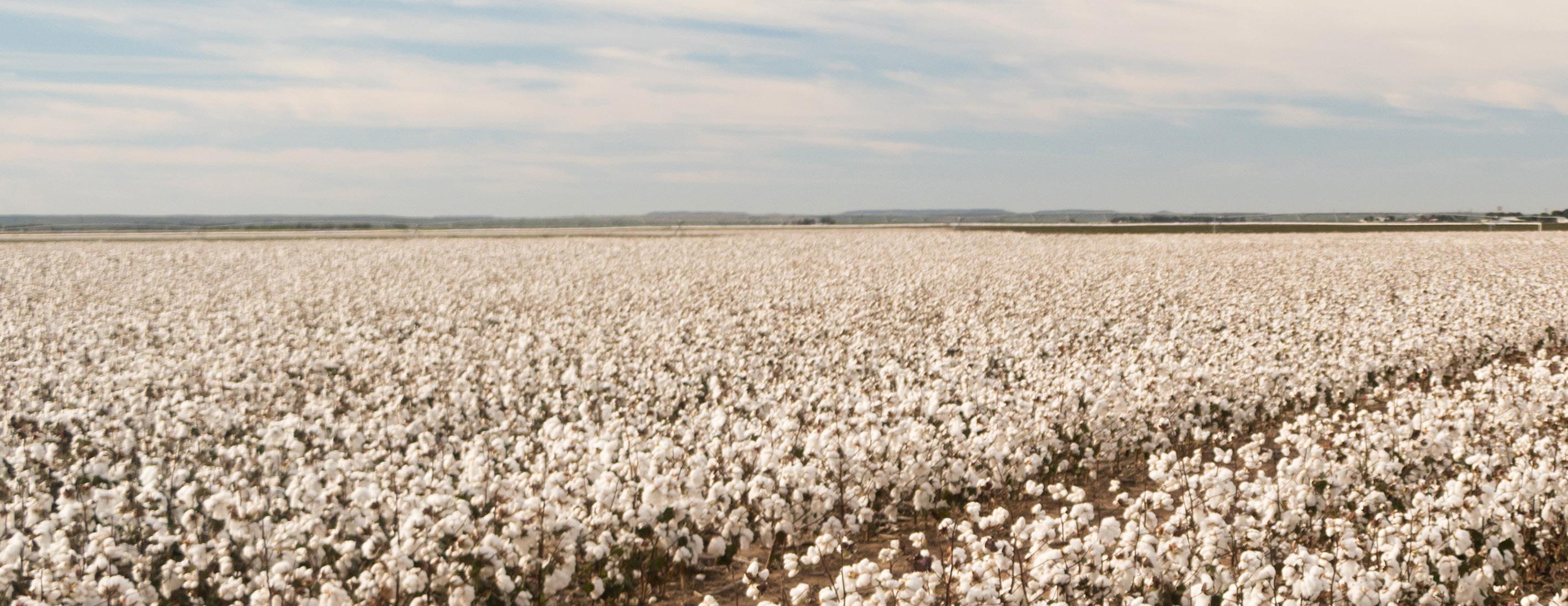

Dear Greyhound Family,
Many of you know that Stephanie and I have been committed to delivering access to higher education for most of our adult lives. There is nothing more exhilarating, nothing more thrilling than fall on our campus. The air is filled with optimism and excitement. The months of autumn on a college campus embody rebirth and renewal. Earning a college degree, especially for the students choosing ENMU, is the beginning of one of the most profound processes of rebirth and renewal that someone may experience. While this is true on any campus in America, it runs deeper for Greyhounds.
Many of our students come from rural, often agricultural backgrounds. Their lives up to the point of choosing ENMU have been deeply formed by the cycles of our environment and the seasonal shifts of life on the High Plains. Despite the technological advances that have allowed us to better predict the future and our increased access to information, one must become comfortable with unpredictability and the unknowable to thrive in Eastern New Mexico. Our region requires firm roots with the land coupled with faith in each other and the future. Our community is bonded by this. This often-invisible union of community and unconditional support of family, friends, and neighbors defines what it means to live in this region and to be a Greyhound.
While you will not receive this issue until the fall, I am writing this note one week after Father's Day. As I think about rebirth and renewal and the often-overlooked bonds of our Eastern Family, I am reminded of my childhood, my own family, and the community we were a part of. These memories are an important part of the sense of family we are working to continue here.
My siblings and I helped mom and dad run a cotton farm in West Texas not far from Portales. We would spend weeks working in the fields to get a stand of cotton, that sign of life and rebirth that marks the late spring and early summer. Dry land farming on the High Plains is hard and unpredictable. We learned quickly to stay humble during success and to imbue hope with hard work.
I remember several occasions when the first signs of a budding crop were wiped away by Mother Nature. A hailstorm would sweep up from the southwest and pummel the earth, or a strong sandstorm would spin through and wipe out weeks of hard work. Of course, there were great years, too, and we annually grew vegetables that we canned and put away to supplement our food source. All in all, one never knew what to expect.
To run that farm, my parents borrowed operations money from the bank to begin each year. Our financial lives were dependent on the unknowable patterns of the climate and weather systems. Our livelihood was not.
Our relationship with the land and our community provided a deep insight into the environment and built a respect for our community in us, which extended far beyond the annual cycle of a bank loan or financial success. No matter what happened, we learned to live simply and in abundance. The natural phases of rebirth and renewal that came from farming our land added to our abundance. It was born from a mutual respect for the land and our community, which were equal partners in it with us. Our strength was tempered by humility and the knowledge that no matter what the wind brought or how intense the heat of the sun, our hearts and hands strengthened, knowing we had each other.
When my father died, he left a crop in the fields. While we grieved and worked to support my mom — something we knew deeply, but never expected, nor had to ask for, happened. Farmers and their families from the surrounding area showed up without being asked and helped us harvest my dad’s last crop.

While nothing replaces the loss of a father, there is something significant about knowing that your community, your family, will be there unconditionally in times of need. There is a throughline that links our community together, like rows of cotton; it reaches from the past through us — out over the horizon — and into the future. I write this with emotion and share it because there is a significant overlap across these cycles of rebirth and renewal that reach from the past, through our families, our land and into the culture we are working to strengthen at Eastern. No matter where you are from, these cycles overlap and form into the values that — through the continuous processes of growth and transformation — define a college education at ENMU. These are the values through which Greyhounds change the world when they are called to service, leadership, fellowship, and family. Stephanie and I could not be prouder to help cultivate the environment for future Greyhounds as we work with our great faculty, staff, and students.
As I look out of my window and see the red iron of the new Student Academic Services (SAS) building rising from the ground, it is fulfilling to know that it will not be long before this building becomes the new front door to ENMU’s campus. It has been designed with great care to create a sense of belonging and will be filled with spaces for student support and success. Students will know from their first moments on campus that they fit and belong here—that they are supported by the invisible hands of those who came before — as they embark on the most substantial process of rebirth and renewal they may ever encounter.
Education forever changes you in a positive way. You learn to think differently, to speak differently, and how to solve problems in new ways. You learn the tools to be flexible, marketable, and resilient for the rest of your life. This education combined with firm roots in family values creates a world of opportunity. A rare combination native to Eastern.
In keeping with this theme, the new SAS building will be home to our newly reimagined Office of Career Services, comprising a director and an associate director, both of whom will be working with Alumni Affairs. The newly restructured office will work to develop external relationships with corporations, companies, and businesses with the goal of developing career opportunities and academic enhancements for our current and future Greyhounds. At the same time, we will devise new curricula to align with industry needs. Whether through internship or co-op programs, company visits in classes, or through career advice and networking, the new Office of Career Services will work to ensure student success for the entire life of our Greyhounds. As a central piece of our new Quality Initiative and part of our next accreditation process with the Higher Education Learning Commission, there will be much more exciting news to come about how alumni can help.
As we welcome another class of first-year students into this academic year, we know they will be reborn and renewed. It gives me great pleasure to know that they are entering into a 91-year history that has been strengthened by myriad cycles of rebirth and renewal, which, like our own journey, are deeply integrated with the unique values of this region and the families that have come before us. I am proud to be leading the way into our next phase of rebirth and renewal.
Go HOUNDS!

Dr. James Johnston President and Chancellor

Larry Minks (MBA 70)
Dr. Minks recently published his latest book titled “Shaping Futures: A Professional’s Reflection on Education and Leadership”, weaving together his journey as student, teacher, and university administrator. Dr. Minks is a retired President Emeritus and Distinguished University Professor of Leadership at Southeastern Oklahoma State University.

Kathy Cranage (BS 75, MBA 77)
Cranage, now a retired Albuquerque local, has worked as an internal auditor, as chief financial officer for Nusenda Credit Union for 17 years, and as chief executive officer at New Mexico Energy Federal Credit Union for 11 years. She married James Stephey (BA 69, MA 73) in 1979 until his death in 2020.

Randy Adrian (BS 78)
After living in NM since 1968, Adrian and his wife, Tonya (BA 1985, MS 1987), moved to Anna, Texas, to be closer to their two daughters, their families, and their granddaughter. The couple now spends their time enjoying retirement.

Randall Hanrahan (BBA 80)
Randy completed his 40-year career as an advisor with ExxonMobil in 2021. He spent 35 years in Texas and his final five years with ExxonMobil in Wyoming. He and his wife Madeleine (BBA 82) are currently retired in Wyoming. Madeleine retired after 33 years in the oil and gas industry. Randy and Madeleine met at ENMU and still hold the University close.

Bernard Sandoval (BS 86)
Bernard Sandoval is a New Mexico-based artist specializing in painting, sculpting, and mixed media. Sandoval recently received recognition on the cover and feature story of the Colorado Springs Lifestyle Magazine.

Karen and Kathleen Grant (Bustamante) (BA 89) started KrafTea Sisters, LLP in Ruidoso, NM, a tea shop offering loose-leaf teas and tea drinks.

Salas is “Living the Dream!” in his retired life after 33 amazing years of teaching math and coaching hoops.

Cindy Black (M. Ed. 96)
Black retired from school counseling in June 2024 after 29 years of service. They are currently finishing a Ph.D. in counselor education and supervision at the University of Nevada. Black is currently an assistant professor of counseling at New Mexico Highlands University.

Gallegos currently teaches coaching and physical education at Madison Middle School in Albuquerque NM. He is set to retire after 29 years of teaching. His family includes his wife, Alicia Flores-Gallegos and their 13 year-old daughter Sofia FloresGallegos. Beyond the classroom, Gallegos also coaches volleyball at Albuqerque Rebels Volleyball Club and intends to do so after he retires.

Stacey is the owner of Body by Bryant (est. 2004) in Evans, Georgia, working as a personal trainer with 25 clients and two group exercise classes. Bryant’s work focuses on rehabilitation, cardio, and strength training. As a student, Bryant was the Lone Star Conference assistant leader for two years.

Heidi works as a full-time therapist in private practice at LiveWell Counseling in Amarillo, Texas. She is a supervisor for New Mexico and Texas, as well as a registered play therapist and supervisor for play. She and her husband, Billy, of 30 years, have two children together.

Amanda Baca is the director of annual giving and engagement at ENMU. A native New Mexican and first-generation graduate of ENMU, Amanda earned concurrent BFA degrees from ENMU and is the proud parent of a current Greyhound. She later earned her master’s degree in non-profit management at the University of Oregon.

Since 2008, Neufeld has worked as a professional in the career field of Health and Human Services for 14 years. Since 2016, she has worked as a mental health specialist and advocate with certification in peer support and psychosocial rehabilitation with the Los Angeles Department of Health in the Office of Behavioral Health. Neufeld married her husband in 2006 and had their first child, a son, in 2017.

Since graduation, Santaniello has become a full-time faculty member in the welding department at Pima Community College in Arizona. They were able to transfer prior credits to ENMU and complete their bachelor’s program online, visit New Mexico, and walk at graduation.
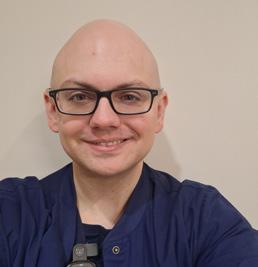
After graduating from ENMU in December of 2012, Kubik moved back to their home state of Iowa. After attempting to secure a job in anthropology, they pursued an alternate profession. Kunik became a registered nurse in 2017 and has continued working in the role for seven years.

Frija earned a Doctor of Nursing Practice (DNP) degree, became double board-certified through the American Nurses Credentialing Center (ANCC), and advanced as a healthcare leader, serving the role of president in several professional organizations. As the Corporate Director of Clinical Education at Ardent Health, she leads initiatives to advance nursing practice and innovation for 30 hospitals across six states.

Zackary Hinds (BS 20)
Hinds currently serves as a Marine Corps drill instructor at Marine Corps Recruit Depot (MCRD) San Diego. He and his wife recently celebrated the birth of their son in September 2024. The couple will be celebrating nine years of marriage.

Jane Beasley (M. Ed. 22)
Beasley recently completed their eighteenth year of teaching and is still loving it. Currently, they teach grade 11 U.S. History and, more recently, grade 12 AP Macroeconomics at La Cueva High School in Albuquerque, New Mexico.
Recognized here are students, alumni, and staff of whom their passing was notified to our Editorial Team between December of 2024 and August 1, 2025.
Edna “Kay” Hargrove (B.S. 68)
July 31, 2025
Edwina K. Brady (attended)
May 29, 2025
Fernando “Fernie” Ramirez (ME 63, BA 59)
March 20, 2025
Patricia Ann Grimshaw (M.Ed 69)
December 5, 2024
Gary Bauerschmidt (BA 73)
June 16, 2025
Charles “Obie” Brown (Attended 72-78)
May 27, 2025
Hershel Carmichael (BBA 72)
April 27, 2025
Charlotte “Pauline” Clark (Attended 65-70)
June 28, 2025
Relene Dixon (Attended 68-71)
May 30, 2025
Cecilia C. Echavarria (Attended 69-76)
June 4, 2025
Rebecca (Greaves) Helianthus (BS 70)
July 1, 2025
Robert L. Hengstenberg (Bob) (BS 71)
October 18, 2024
Allan Furlow Isbell (Graduated 72)
June 1, 2025
Marcy Lynn James (BSE 72)
July 2, 2025
Lt. Colonel Clyde Lowell Long, Jr. (BUS 72)
August 1, 2025
Suzy Barnett Matlock (MEd 76, BSE 70)
July 17, 2025
Joe Ramon Perea (BA 72)
June 18, 2025
Cyrus Fleming Rilee, Jr. (MBA 73, BS 72)
June 11, 2025
Randy Ray Doerhoefer (Attended 83-84)
July 27, 2025
Matthew J. Hillsman (MA 81)
June 9, 2025
Lilia Joy Stevenson “Joy” (Attended 81)
June 15, 2025
Gabe Cherry (Attended 95-97)
June 24, 2025
Christina Maria Gutierrez-Finley (BBA 98)
June 27, 2025
Dr. Joseph William Marnell (BBA 99)
June 17, 2025
Heather René McNiel (Attended 96-99)
June 25, 2025
Jermaine B. “Dewdrop” Shanks (Attended 99-02)
June 30, 2025
Jamie Dawn Sandoval (BSN 14)
June 3, 2025
Scan to see more of their lives or add your loved ones to the ENMU page managed by Legacy.com.



Eastern New Mexico University
Office of Advancement and Public Relations
Station 62
1500 S Ave K
Portales, NM 88130
Return Service Requested
1Roo is a way for each academic and athletic unit at Eastern to raise support and visibility for their unique Roo! ‘One Roo’ embodies our collective commitment to ensuring that ENMU remains a place where dreams are nurtured, courage is fostered, and tenacity is rewarded. It’s a call to action, urging us to unite and amplify our impact on the lives of our students and the future of our university.
Greyhounds all over the country can enable us to be responsive, agile, and truly impactful in our mission, transforming the world and future Greyhounds through giving back at any level you can and sharing your ROO for ENMU. Together, we can continue to build a community where futures are built, impact is made, and every Greyhound can thrive.
Answer the call. Answer the ROO for ENMU and give online today at giving.enmu.edu
